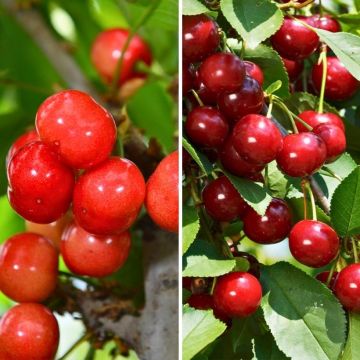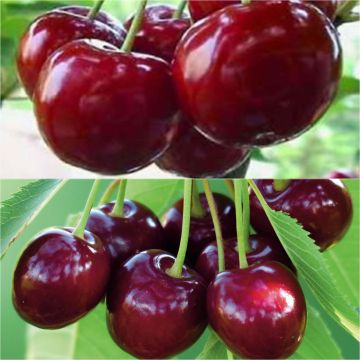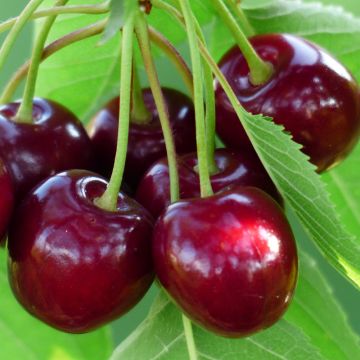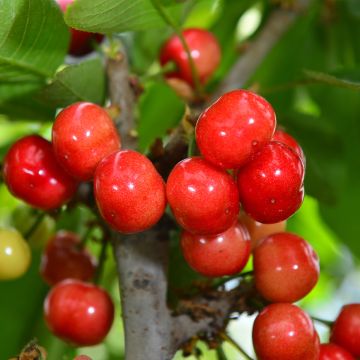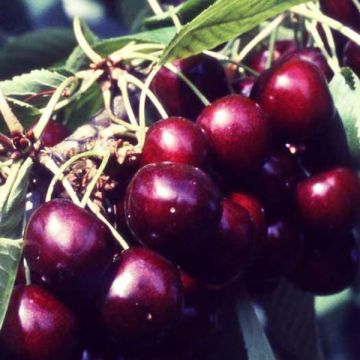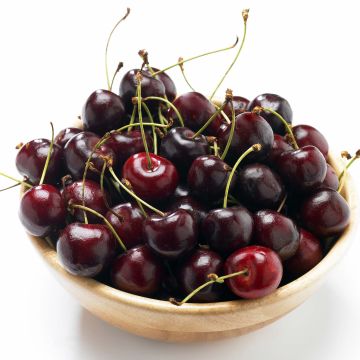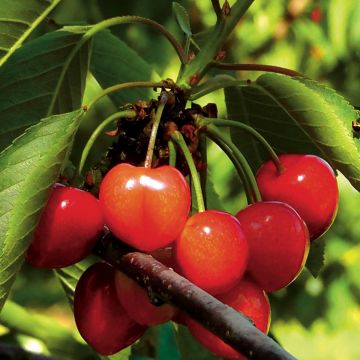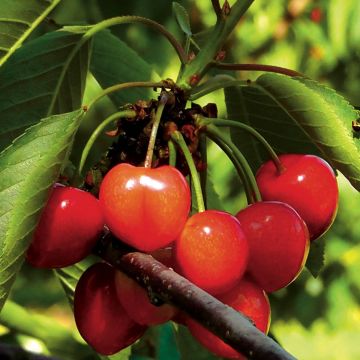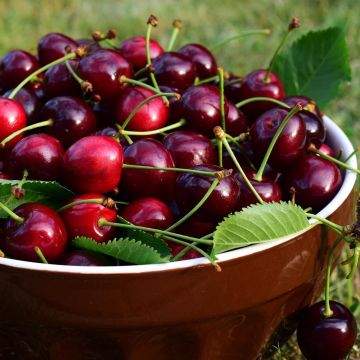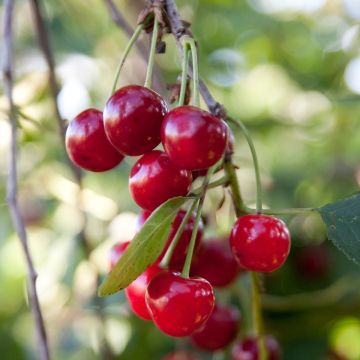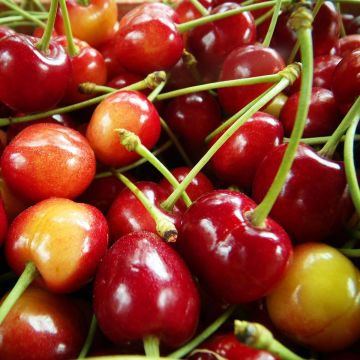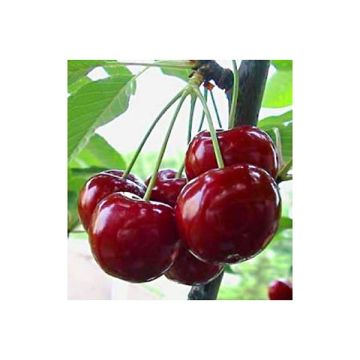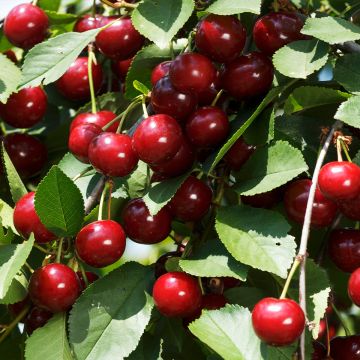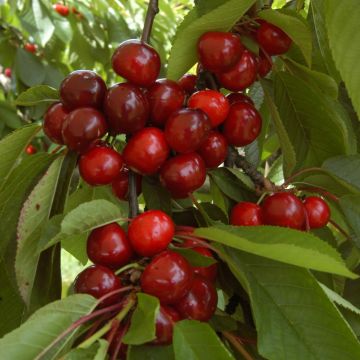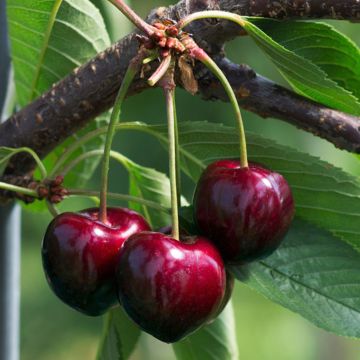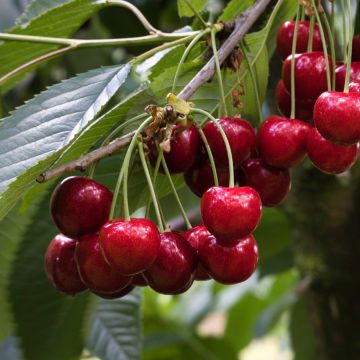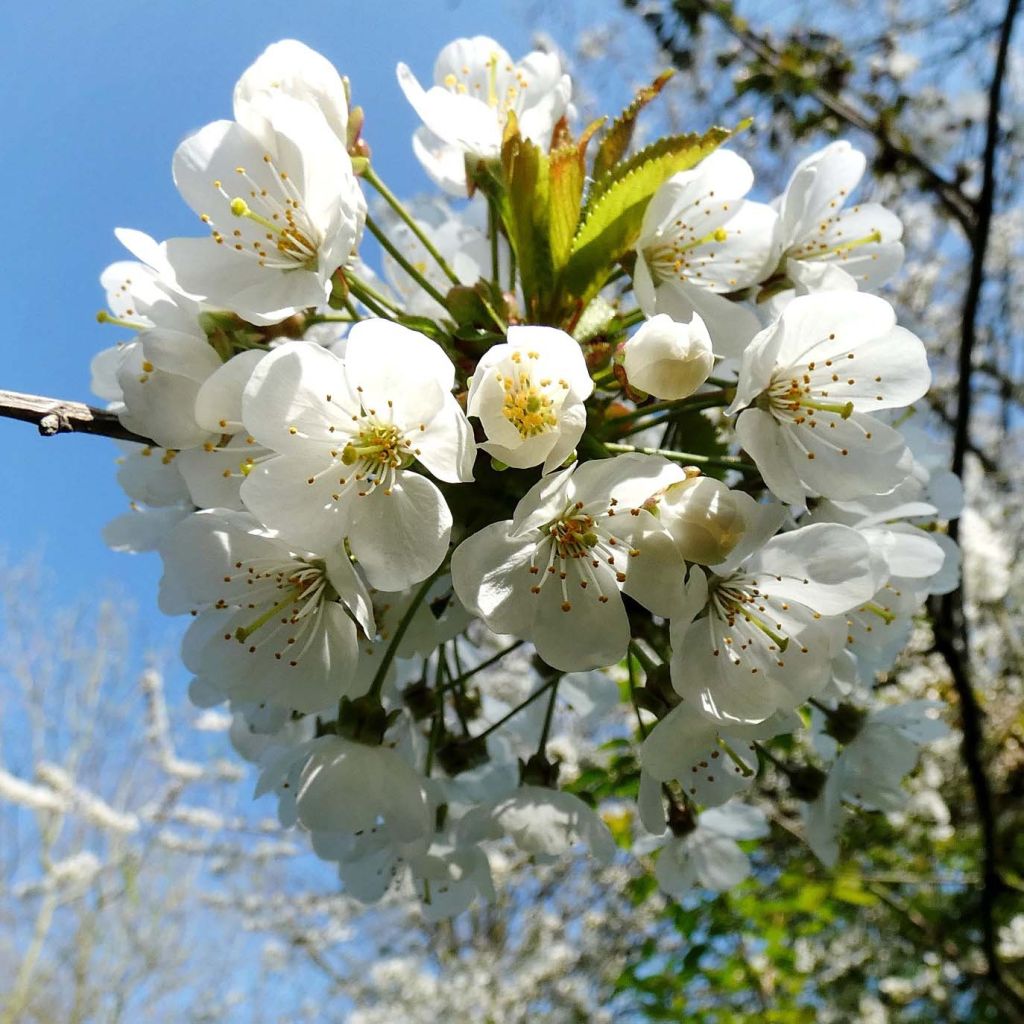

Bird Cherry - Prunus avium
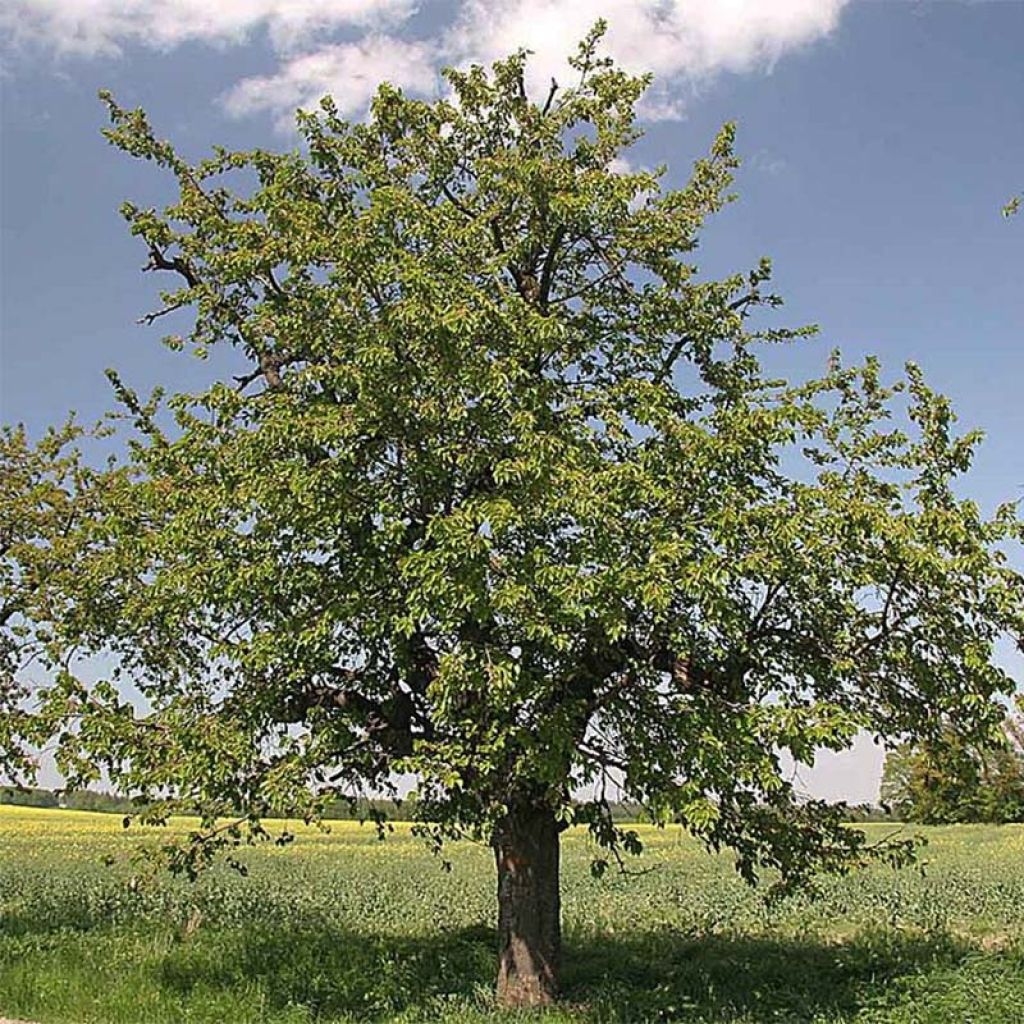

Bird Cherry - Prunus avium
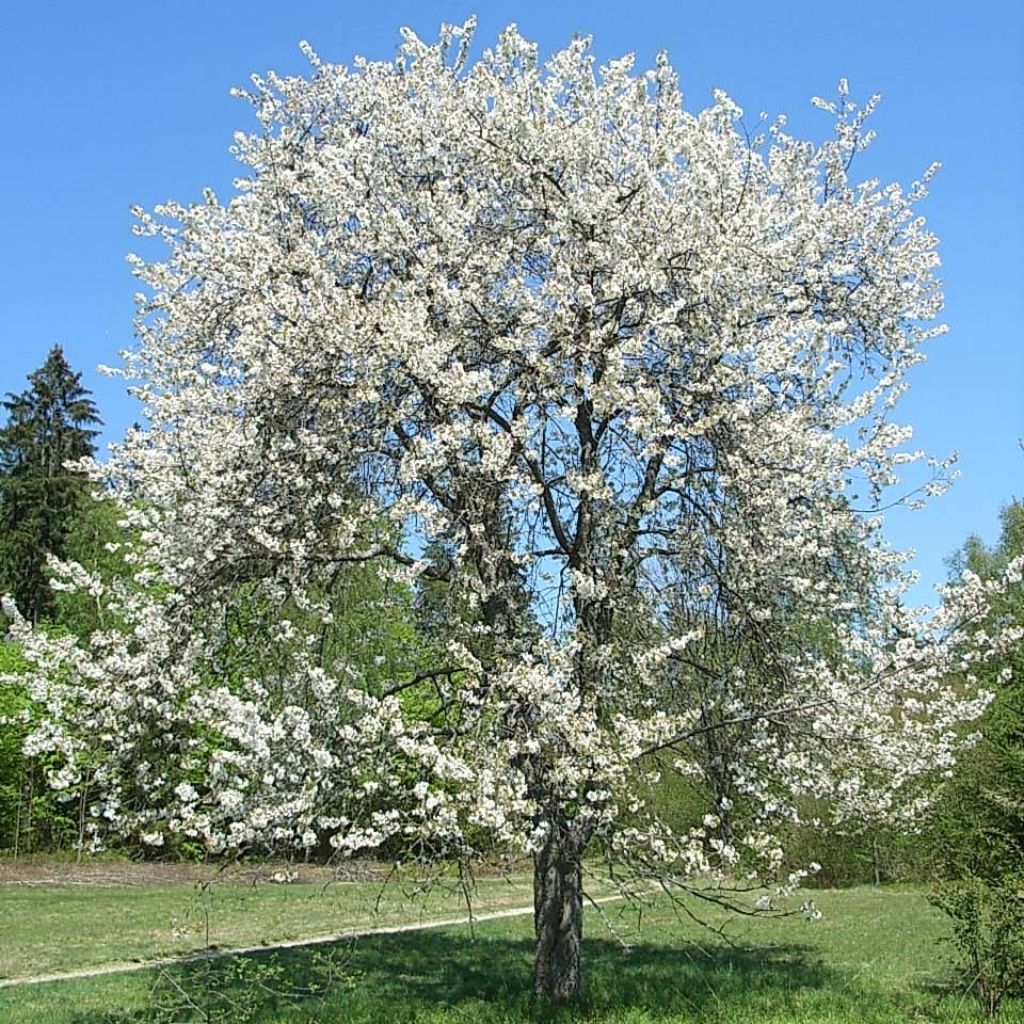

Bird Cherry - Prunus avium
Bird Cherry - Prunus avium
Prunus avium
Wild Cherry, Sweet Cherry, Bird Cherry
Why not try an alternative variety in stock?
View all →This plant carries a 24 months recovery warranty
More information
We guarantee the quality of our plants for a full growing cycle, and will replace at our expense any plant that fails to recover under normal climatic and planting conditions.
Oversize package: home delivery by special carrier from €6.90 per order..
Express home delivery from €8.90.
Oversize package: home delivery by special carrier from €6.90 per order..
Express home delivery from €8.90.
Delivery to Corse prohibited: UE law prohibits the import of this plant from mainland France to Corse as part of the fight against Xylella fastidiosa. Please accept our sincere apologies.
More information
Does this plant fit my garden?
Set up your Plantfit profile →
Description
The Wild cherry or bird cherry, in Latin Prunus avium, like its close relative the sour cherry (Prunus cerasus), is the ancestor of the cultivated cherry trees in our gardens for their sweet and succulent cherries. It is a fruit tree of good size, which grows spontaneously in the forests of Western Europe. It is interesting for its rapid growth, its white and fragrant flowering in early spring, its small red cherries that attract birds and its autumn colours. These fruits are edible but often have a bitter taste. However, they have a wonderful aroma of bitter almond that can be found in Kirsch. Make sure to provide enough space and a well-cleared location to accommodate it in the garden.
The wild cherry belongs to the rose family. Its presence has been documented in Europe since the Neolithic period and its cultivation dates back to the fourth century BC, in the Caucasus and Anatolia. It is a tree with rapid and significant development, reaching over 10 m (33ft) in height with a slightly more modest width. It develops a straight trunk and a regular, airy crown, with an oval shape and a narrow top, supported by slightly upright branches. Its bark is thin and shiny, initially reddish-brown in colour, but tends to peel off in strips. The abundant and decorative flowering takes place in April-May, just before the appearance of the foliage. It takes the form of small clusters of white flowers that attract bees. To obtain fruiting, it is necessary for the flowers to be pollinated by another cherry tree present nearby. The small cherries, with long stalks, turn dark red when ripe. Their flesh is slightly sweet and acidic, bitter and aromatic. The deciduous foliage appears in spring and falls in autumn. It consists of alternate, elliptical leaves with toothed edges. They turn yellow and orange in October-November before falling. The root system of the Wild cherry is deep and powerful, with fairly long trailing roots capable of suckering. This wild cherry is often used as a rootstock, especially for limestone soils. And its soft wood is highly valued in cabinetmaking.
The Wild cherry is best planted as a standalone tree in a large garden or in an orchard where its presence will promote good pollination for classic cherry trees. In a garden that makes room for nature, you can also plant a blackthorn, an Amelanchier, a rowan tree, a whitebeam, an Aronia 'Brilliant'...
Report an error about the product description
Bird Cherry - Prunus avium in pictures


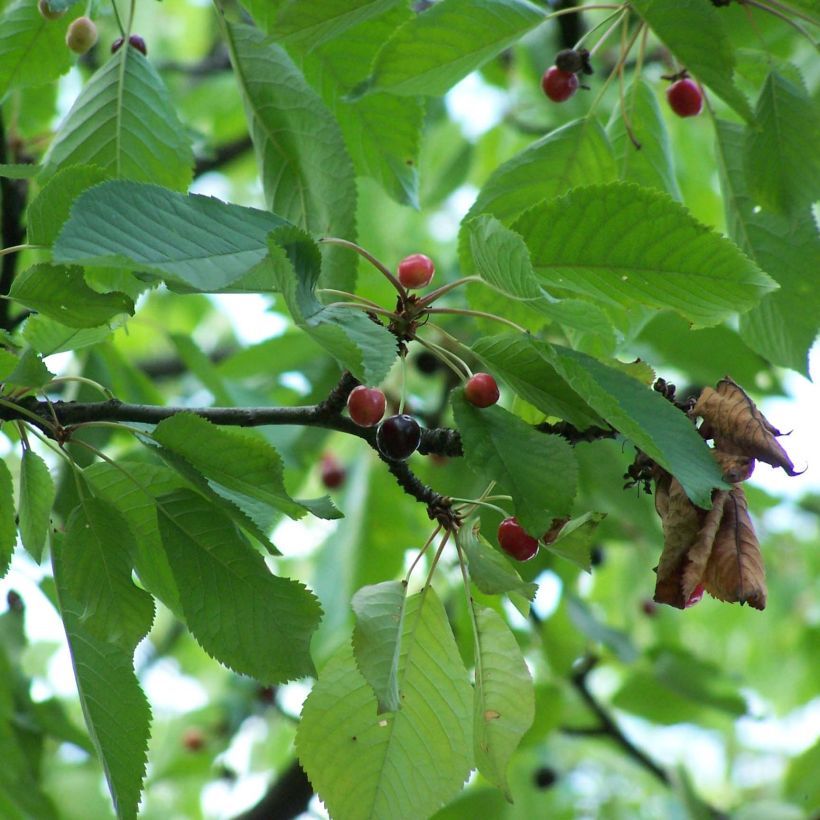

Plant habit
Flowering
Foliage
Botanical data
Prunus
avium
Rosaceae
Wild Cherry, Sweet Cherry, Bird Cherry
Western Europe
Other Cherry trees
Planting and care
The Bird Cherry is planted in autumn or early spring in a sunny location, in a well-cleared area away from buildings and water ducts. It prefers deep, rich soils that remain moist, preferably with a tendency towards limestone or neutral soils.
To limit the risk of late frosts on the flowers, it is recommended to plant the bird cherry in a sheltered position, facing west and protected from cold winds in regions that experience spring frosts. Planting is preferably done in autumn. If you plant multiple plants, space them 4 to 5 m (13 to 16ft) apart for young plants in cups.
Loosen the soil deeply, remove rocks and unwanted herbs. Add some sand to improve drainage. Dig a hole 4 to 5 times the volume of the root ball. Make sure to separate the bottom soil from the surface soil. Mix crushed horn or well-rotted compost or potting soil with the bottom soil and pour this mixture into the planting hole. Install a stake. Place the root ball, cover with the surface soil and pack it down well. Water generously (approximately 10 L). Tie the stake to the plant, crossing the tie in the shape of an 8, without touching the trunk.
During cultivation, watering is not necessary except in case of extreme heat. Mulch at the base to retain moisture in summer.
Planting period
Intended location
Care
-
, onOrder confirmed
Reply from on Promesse de fleurs
Haven't found what you were looking for?
Hardiness is the lowest winter temperature a plant can endure without suffering serious damage or even dying. However, hardiness is affected by location (a sheltered area, such as a patio), protection (winter cover) and soil type (hardiness is improved by well-drained soil).

Photo Sharing Terms & Conditions
In order to encourage gardeners to interact and share their experiences, Promesse de fleurs offers various media enabling content to be uploaded onto its Site - in particular via the ‘Photo sharing’ module.
The User agrees to refrain from:
- Posting any content that is illegal, prejudicial, insulting, racist, inciteful to hatred, revisionist, contrary to public decency, that infringes on privacy or on the privacy rights of third parties, in particular the publicity rights of persons and goods, intellectual property rights, or the right to privacy.
- Submitting content on behalf of a third party;
- Impersonate the identity of a third party and/or publish any personal information about a third party;
In general, the User undertakes to refrain from any unethical behaviour.
All Content (in particular text, comments, files, images, photos, videos, creative works, etc.), which may be subject to property or intellectual property rights, image or other private rights, shall remain the property of the User, subject to the limited rights granted by the terms of the licence granted by Promesse de fleurs as stated below. Users are at liberty to publish or not to publish such Content on the Site, notably via the ‘Photo Sharing’ facility, and accept that this Content shall be made public and freely accessible, notably on the Internet.
Users further acknowledge, undertake to have ,and guarantee that they hold all necessary rights and permissions to publish such material on the Site, in particular with regard to the legislation in force pertaining to any privacy, property, intellectual property, image, or contractual rights, or rights of any other nature. By publishing such Content on the Site, Users acknowledge accepting full liability as publishers of the Content within the meaning of the law, and grant Promesse de fleurs, free of charge, an inclusive, worldwide licence for the said Content for the entire duration of its publication, including all reproduction, representation, up/downloading, displaying, performing, transmission, and storage rights.
Users also grant permission for their name to be linked to the Content and accept that this link may not always be made available.
By engaging in posting material, Users consent to their Content becoming automatically accessible on the Internet, in particular on other sites and/or blogs and/or web pages of the Promesse de fleurs site, including in particular social pages and the Promesse de fleurs catalogue.
Users may secure the removal of entrusted content free of charge by issuing a simple request via our contact form.
The flowering period indicated on our website applies to countries and regions located in USDA zone 8 (France, the United Kingdom, Ireland, the Netherlands, etc.)
It will vary according to where you live:
- In zones 9 to 10 (Italy, Spain, Greece, etc.), flowering will occur about 2 to 4 weeks earlier.
- In zones 6 to 7 (Germany, Poland, Slovenia, and lower mountainous regions), flowering will be delayed by 2 to 3 weeks.
- In zone 5 (Central Europe, Scandinavia), blooming will be delayed by 3 to 5 weeks.
In temperate climates, pruning of spring-flowering shrubs (forsythia, spireas, etc.) should be done just after flowering.
Pruning of summer-flowering shrubs (Indian Lilac, Perovskia, etc.) can be done in winter or spring.
In cold regions as well as with frost-sensitive plants, avoid pruning too early when severe frosts may still occur.
The planting period indicated on our website applies to countries and regions located in USDA zone 8 (France, United Kingdom, Ireland, Netherlands).
It will vary according to where you live:
- In Mediterranean zones (Marseille, Madrid, Milan, etc.), autumn and winter are the best planting periods.
- In continental zones (Strasbourg, Munich, Vienna, etc.), delay planting by 2 to 3 weeks in spring and bring it forward by 2 to 4 weeks in autumn.
- In mountainous regions (the Alps, Pyrenees, Carpathians, etc.), it is best to plant in late spring (May-June) or late summer (August-September).
The harvesting period indicated on our website applies to countries and regions in USDA zone 8 (France, England, Ireland, the Netherlands).
In colder areas (Scandinavia, Poland, Austria...) fruit and vegetable harvests are likely to be delayed by 3-4 weeks.
In warmer areas (Italy, Spain, Greece, etc.), harvesting will probably take place earlier, depending on weather conditions.
The sowing periods indicated on our website apply to countries and regions within USDA Zone 8 (France, UK, Ireland, Netherlands).
In colder areas (Scandinavia, Poland, Austria...), delay any outdoor sowing by 3-4 weeks, or sow under glass.
In warmer climes (Italy, Spain, Greece, etc.), bring outdoor sowing forward by a few weeks.

































